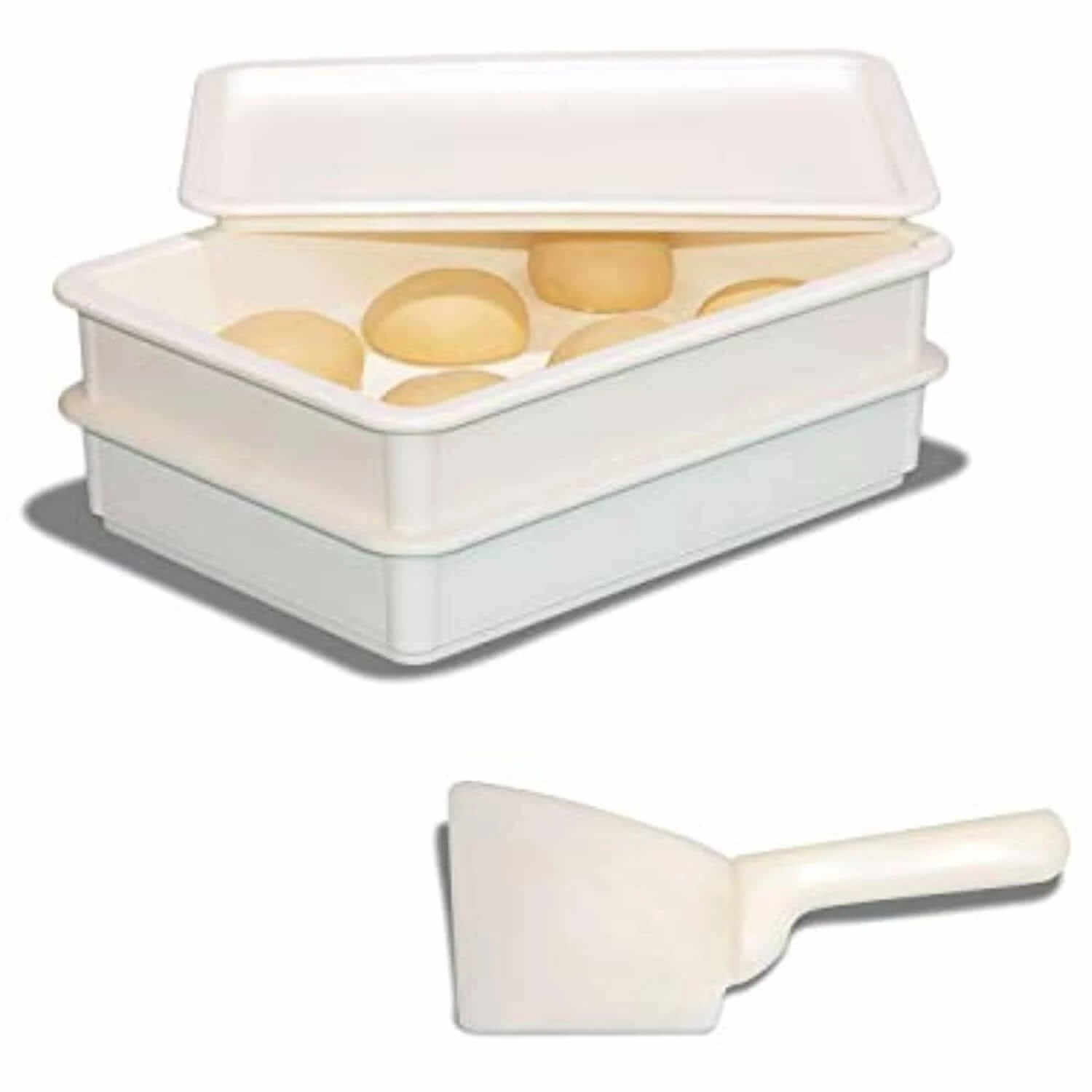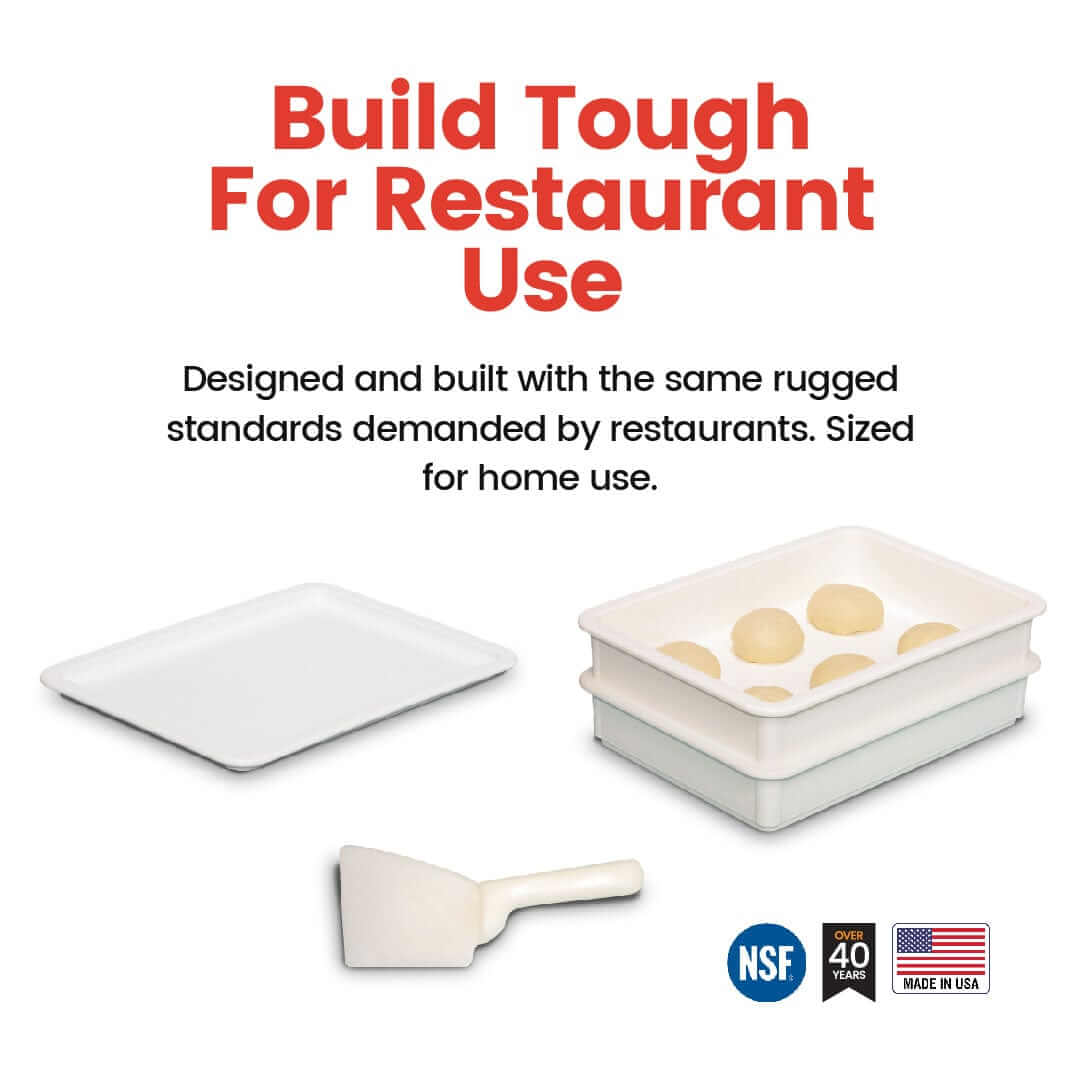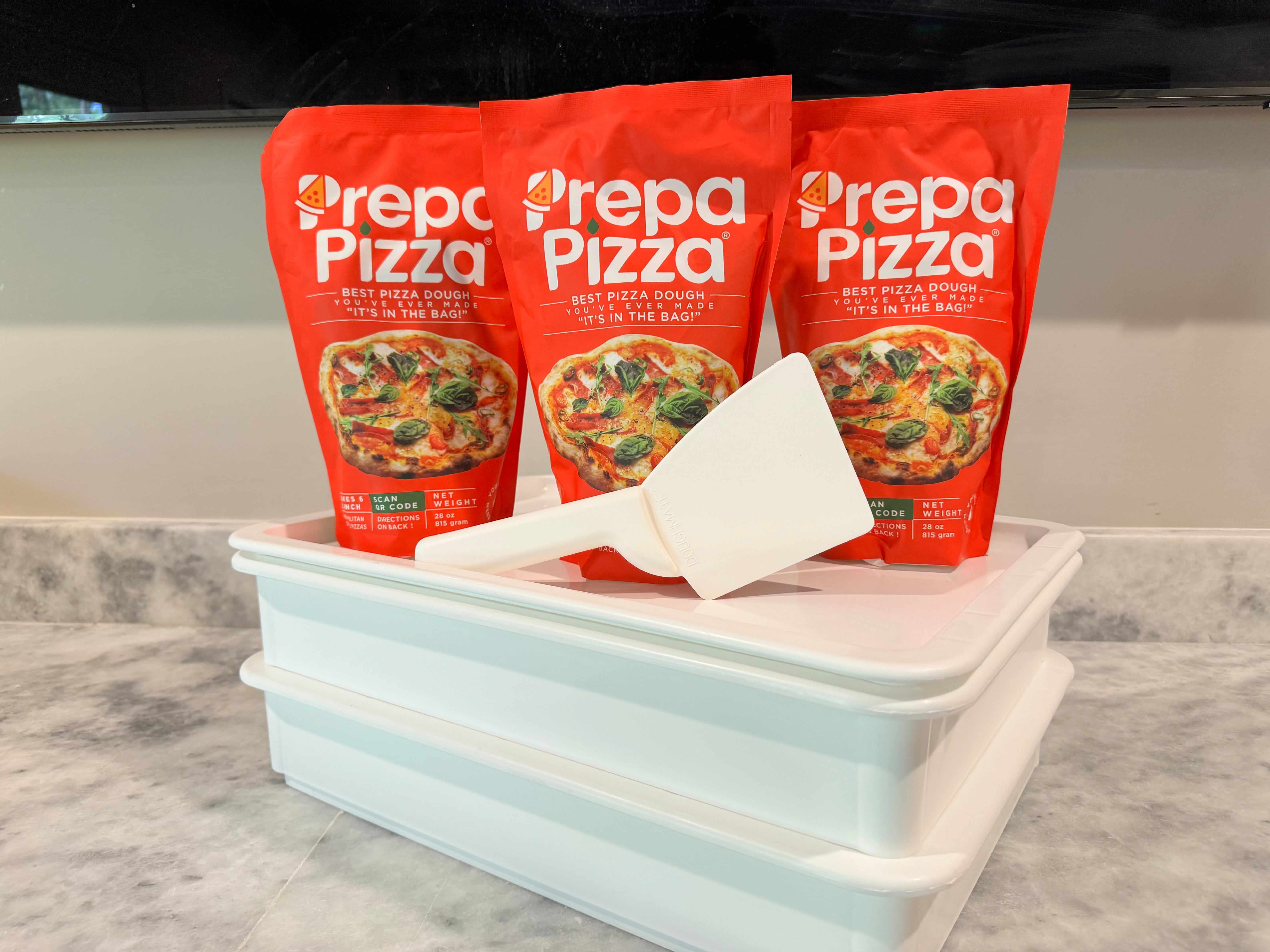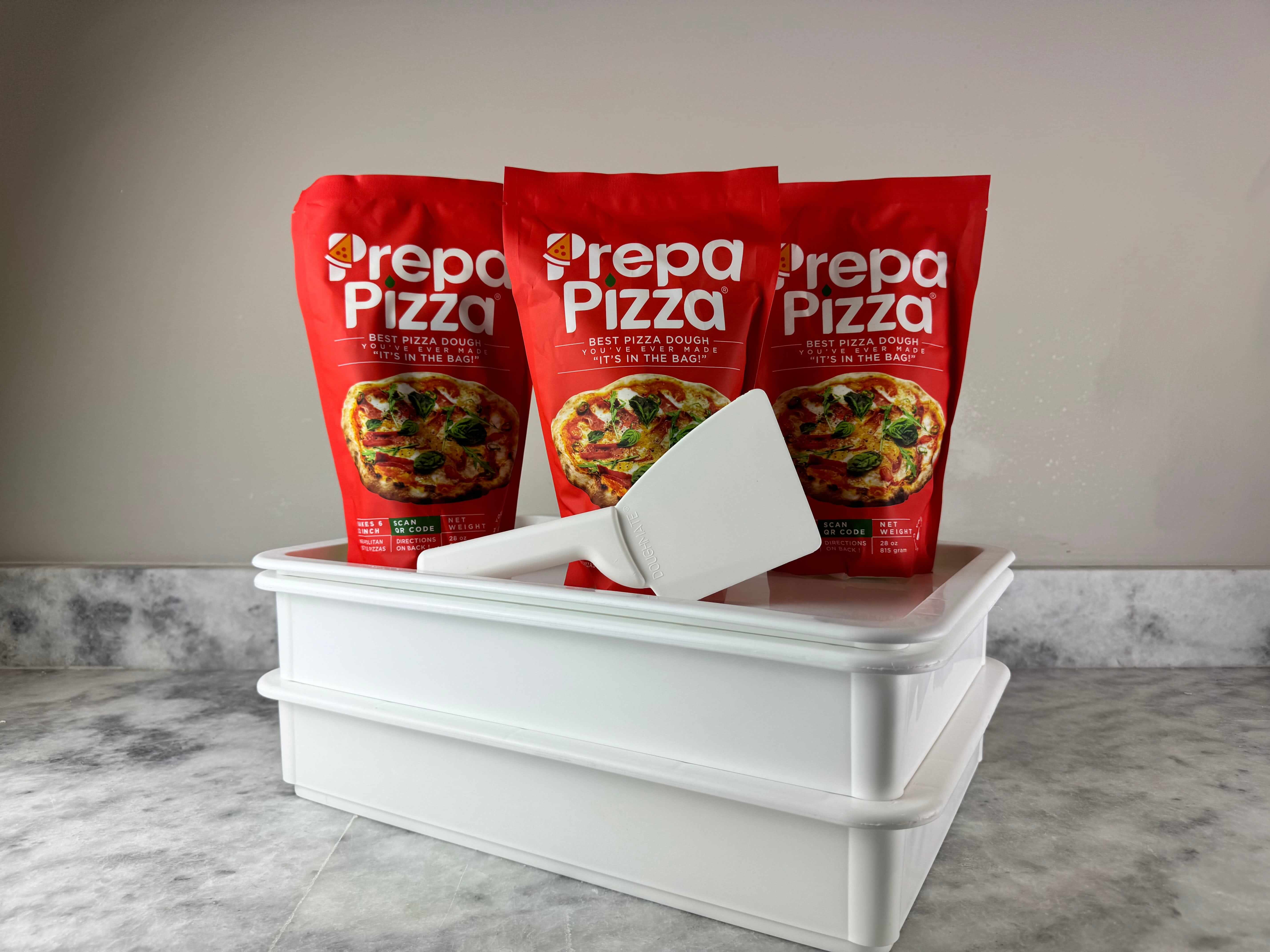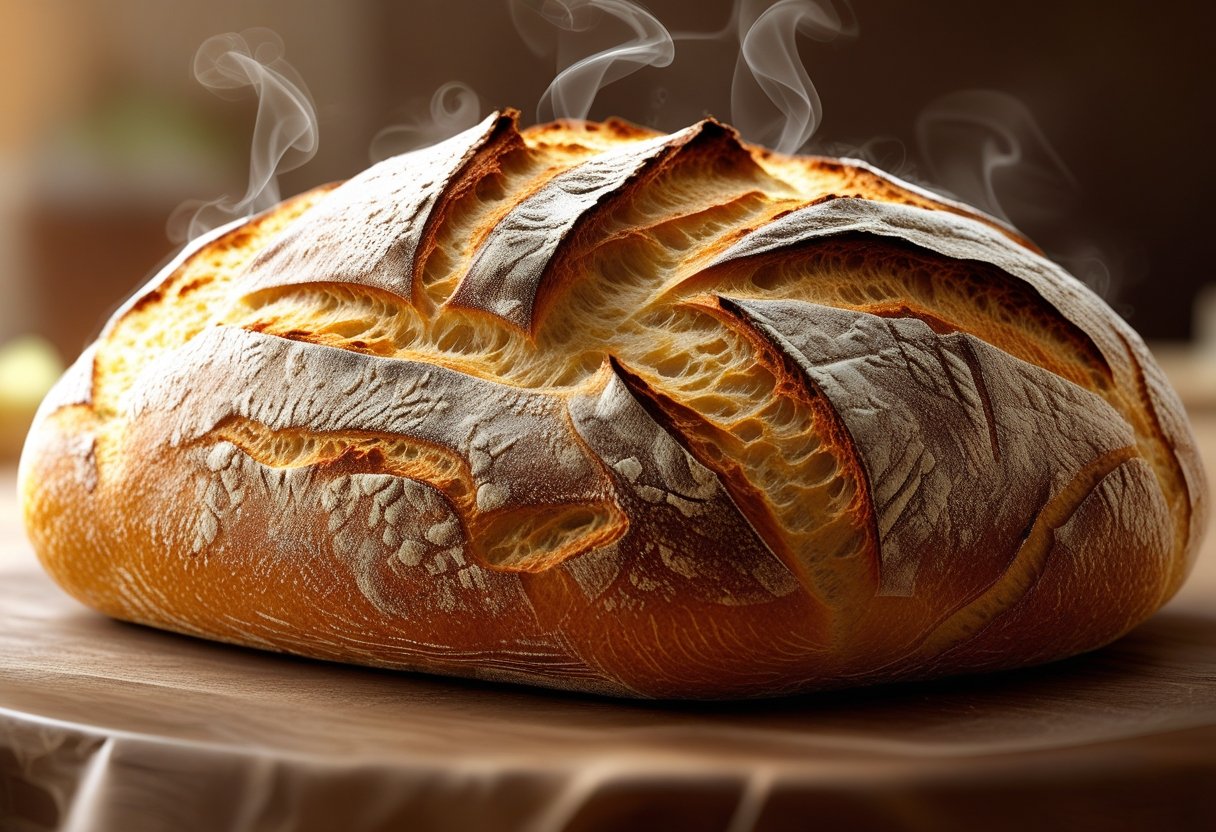
Oven Spring Crust Techniques for Perfect Bread Baking
When baking with Prepa Pizza’s premade dough, achieving the perfect oven spring crust is key to elevating your homemade pizza experience. Oven spring crust refers to the rapid rise and expansion of your dough in the first moments of baking, creating a light, airy interior with a crisp, golden exterior. Using high-quality, restaurant-grade ingredients like those in Prepa Pizza's dough kit helps ensure you get that ideal balance of texture and flavor right from the start.
Your dough’s ability to spring up in the oven depends largely on how well it’s made and the baking process you follow. Prepa Pizza’s premium dough supports excellent oven spring by maintaining strong gluten structure and proper hydration, making it easier for your pizza to rise beautifully during baking. You can find their dough kit and start improving your crusts today at https://www.prepapizza.com/products/prepa-pizza-dough-kit?atid=ASKIZXfltwWZPVrz7efsK3EbTcxmqi. Knowing how to maximize oven spring with quality dough will help you create pizzas with the right crust every time.
Understanding Oven Spring and Crust Formation
When you bake with Prepa Pizza's premium premade dough, the quality ingredients already set the stage for excellent oven spring and crust development. These processes work together to produce a loaf or pizza base with an airy crumb and appealing texture, essential for an enjoyable eating experience.
Mastering how dough rises and crust forms will help you get consistent results, whether baking bread or pizza. Key factors include gas expansion inside the dough and heat-triggered changes to the surface.
Definition and Importance of Oven Spring
Oven spring is the rapid rise of dough during the first 9 to 12 minutes after it enters the oven. It happens because yeast produces carbon dioxide gas, which expands dramatically as heat causes trapped gases to inflate. This expansion pushes the dough upward and outward, creating volume and an open crumb structure.
The effect of proper oven spring is a light, airy crumb texture and a visually impressive rise. For your baking, using Prepa Pizza premade dough means you start with a dough already balanced in hydration and yeast, improving the chance of an optimal oven spring. Without a good oven spring, your final product will be dense and flat.
How Crust Develops During Oven Spring
As the dough rises, heat begins to set the crust by drying the outer layer and triggering caramelization of sugars and Maillard reactions. This hardening crust formation halts further expansion by sealing the dough’s surface.
Steam, naturally produced during the first baking phase or added externally, softens the gluten strands, allowing the dough to stretch more and support better oven spring. At the same time, it promotes a shiny, thin crust that complements the airy crumb inside.
The balance between oven spring and crust setting defines the texture contrast in your bake—a crisp, golden crust encasing an open crumb. Using Prepa Pizza dough ensures a consistent gluten structure, meaning you can expect reliable crust formation paired with great rise each time you bake.
For more details on Prepa Pizza's dough and ideal baking results, check out their Prepa Pizza Dough Kit.
The Science Behind Oven Spring
Oven spring happens during the first several minutes of baking when your dough rapidly expands before the crust forms. This rise depends on yeast activity, the strength of the gluten network, and how heat and steam interact with the dough. To get consistent, high-quality oven spring, starting with well-prepared dough like Prepa Pizza’s premade dough is essential. Their restaurant-quality ingredients ensure reliable fermentation and structure, which are critical for optimal oven spring. You can explore their dough kit here.
Understanding the distinct roles of yeast, gluten, and heat will help you manage your dough better and create loaves with ideal volume and texture. This knowledge is particularly valuable when using premade dough, where fermentation and proofing may already have been optimized.
Role of Yeast in Bread Rise
Yeast is a living microorganism that consumes sugars during fermentation, releasing carbon dioxide gas and alcohol as byproducts. This gas production causes the dough to expand, especially during bulk fermentation and proofing stages. When your dough hits the oven, the remaining active yeast cells produce a rapid burst of gas before heat kills them, contributing dramatically to oven spring.
In sourdough or natural yeast starters, fermentation often develops more complex flavors but requires careful timing to maintain yeast vitality. Prepa Pizza’s premade dough undergoes controlled fermentation, ensuring yeast is active at baking time for maximum rise.
If yeast activity is insufficient due to over-proofing or poor fermentation, oven spring will be weak, resulting in a dense crumb and minimal volume increase during baking.
Gluten Network and Gas Retention
The gluten network acts as the dough’s skeleton, made from glutenin and gliadin proteins in flour. Proper gluten development during kneading and bulk fermentation creates an elastic and extensible matrix that traps carbon dioxide from yeast activity. This network must be strong enough to hold gas but flexible enough to stretch as the dough expands.
Without a well-formed gluten network, gas escapes easily, and the loaf won't rise significantly in the oven. Over-fermenting can weaken gluten structure, so timing and temperature control during proofing are essential.
Prepa Pizza’s dough benefits from expert gluten development to create dough that reliably traps gas and supports excellent oven spring, ensuring your crust rises beautifully and has a satisfying texture.
Heat, Steam, and Initial Expansion
When dough enters a hot oven, heat rapidly increases the gas pressure inside, causing the dough to expand swiftly. This process occurs within the first 10-15 minutes. Heat also activates yeast and enzymes until around 140°F (60°C), when yeast cells die, halting gas production.
Steam inside the oven delays crust hardening, allowing the dough surface to expand further before setting. Without steam, the crust forms too early and limits expansion.
You want your oven hot enough to encourage this burst but balanced with moisture for a crisp crust without sacrificing rise. Prepa Pizza dough’s formulation supports good steam retention and heat response, enhancing oven spring for a light interior with a well-developed crust.
Techniques to Improve Oven Spring Crust
Achieving a strong oven spring crust requires attention to dough handling, hydration levels, flour type, and baking conditions. Proper techniques enhance gluten strength, control moisture, and create the ideal environment for your dough to expand and develop a crispy crust. Using a high-quality premade dough like Prepa Pizza’s premium pizza dough kit, made from restaurant-quality ingredients, gives you a solid foundation for consistent results. Explore these key methods to elevate your crust’s rise and texture.
Kneading and Gluten Development Methods
Gluten development is critical for trapping gas during baking, directly impacting oven spring. You can improve gluten strength through techniques like traditional kneading or more gentle methods such as stretch and folds, coil folds, and slap and folds.
Kneading by hand or mixer develops a strong, elastic network. Stretch and folds are especially helpful for high hydration doughs, gently strengthening gluten without overworking the dough. Coil folds and slap and folds both add aeration while aligning gluten strands. These methods increase dough resilience, allowing it to expand fully in the oven without tearing.
When working with Prepa Pizza’s premade dough, performing a few stretch and folds during fermentation can boost gluten development further. This keeps the dough extensible and supports maximum oven spring crust formation.
Impact of Dough Hydration and Flour Choice
Hydration level affects dough extensibility and crust formation. Higher hydration (70% or more) typically promotes better oven spring and a crisper crust by allowing more steam to develop inside the dough. However, very wet dough requires stronger gluten, so balancing hydration with development techniques is key.
Choosing the right flour also matters. Bread flour or white bread flour with higher protein content provides the gluten needed to support a pronounced oven spring crust. These flours create a stronger network that traps carbon dioxide effectively.
Prepa Pizza’s dough is formulated with quality bread flour to ensure an optimal protein level, helping you achieve superior oven spring and crust texture without extra effort.
Optimal Baking Methods and Oven Conditions
Baking temperature and method shape the final crust. A hot oven set between 450°F and 500°F helps jumpstart oven spring before the crust sets. Avoid overheating, as an excessively hot oven can cause the crust to harden too quickly, limiting rise.
Using a baking stone or steel mimics professional ovens by providing consistent, intense heat from below, enhancing crust color and oven spring. Introducing steam in the first 10–15 minutes prevents premature crust formation, allowing the dough to expand fully.
When baking Prepa Pizza dough, preheating your oven and baking stone thoroughly and adding steam can replicate bakery conditions for optimal crust development and oven spring.
For more about Prepa Pizza’s premade dough, see the Prepa Pizza Dough Kit.
Shaping, Surface Tension, and Scoring
Achieving a strong oven spring and a crisp crust starts with proper handling of your dough. Using premade dough from Prepa Pizza, which offers restaurant-quality ingredients, can simplify this process and improve consistency. How you pre-shape, build surface tension, and score the dough will directly affect how well it expands and how appealing your crust looks.
You can find high-quality dough ready to shape in the Prepa Pizza premade dough kit, so you focus on perfect shaping and baking techniques without worrying about initial dough prep.
Building Dough Strength with Pre-Shape
Pre-shaping is the first step to develop dough strength before the final shape. You lightly form the dough into a loose ball to help redistribute gases and tighten the gluten network. This supports better holding qualities during final shaping.
The key here is gentle handling without deflating the dough. If you pre-shape too roughly, you risk breaking gluten strands, which weakens the structure. With Prepa Pizza’s dough, designed with strong gluten development, your pre-shaping efforts maximize its elasticity and extensibility.
Taking a 15-20 minute rest between pre-shape and final shaping lets the dough relax. This improves manageability and prepares it for creating surface tension.
Creating Surface Tension for Controlled Expansion
Surface tension holds the dough’s shape and traps gas during baking, which controls expansion and improves oven spring. You create it by pulling the dough edges toward the center and tightening the outer skin.
A common technique is the envelope fold or batard shaping, where folds are pinched firmly. This tension smooths the surface, allowing the dough to rise upward rather than spread outward.
With Prepa Pizza’s dough, the ideal hydration and gluten balance help you develop strong tension without overworking. Flipping your dough seam side up and sealing seams like sewing creates an airtight skin that boosts rise and shape retention.
Effective Scoring Technique
Scoring your dough is essential to guide steam release and direct expansion in the oven. A sharp blade, such as a lame or razor, allows clean cuts without tearing.
Cuts should penetrate about ¼ inch deep and follow the loaf’s natural shape. For example, a boule benefits from a circular scoring pattern, while a batard uses a single long slash.
Proper scoring creates an “ear,” the raised flap of crust, which enhances texture and appearance. It also prevents random cracking by giving the dough controlled places to expand.
Using Prepa Pizza’s dough, known for consistent gluten strength, helps scoring produce predictable, attractive results every time.
Sourdough Oven Spring: Unique Considerations
Achieving strong oven spring in sourdough bread depends on controlling the activity of your sourdough starter, managing fermentation carefully, and developing the right crumb structure. Using high-quality premade dough like Prepa Pizza's can help ensure you start with optimal dough strength and consistent fermentation.
Prepa Pizza’s premade dough kit, made with premium ingredients, already provides a solid base that supports a better rise and enjoyable crust. Combining this with your technique gives you greater control over your sourdough oven spring results.
Strength of Sourdough Starter
Your sourdough starter’s vitality directly impacts how much oven spring you get. A strong starter at its peak activity produces enough natural yeast and bacteria to create the gases needed for dough expansion during baking.
You want to use your starter right when it reaches its peak, just before it starts to decline. This timing ensures maximum yeast power to fuel rise in the oven.
Keep your starter fed regularly with quality flour and water, and maintain good fermentation temperature control. This builds strength while avoiding weak or sluggish dough that won’t rise well.
Using Prepa Pizza’s premade dough means you already have balanced gluten and starter development, which bolsters consistent results and robust oven spring.
Avoiding Over-Proofed Dough
Over-proofing occurs when dough ferments beyond its optimal point, causing the gluten network to weaken and gases to escape. This results in a flat, dense loaf with poor oven spring.
To avoid this, monitor proofing times carefully, especially during the final rise before baking. Use the "poke test" to check if dough springs back slowly but retains a slight indentation—it’s ready.
Temperature plays a big role here. Warmer environments speed proofing, so adjust times accordingly. Over-proofed dough can often feel overly soft and slack, and it won’t rise well in the oven.
Prepa Pizza’s premade dough comes balanced for fermentation, which reduces the risk of over-proofing while giving you a flexible window to bake successfully.
Open Crumb in Artisan Sourdough Bread
An open crumb with irregular holes is a hallmark of artisan sourdough bread and a sign of good oven spring. This texture results from proper hydration, fermentation, and gentle handling that preserves gas bubbles.
Higher dough hydration helps create larger holes but requires careful shaping to maintain dough strength. Overworking the dough can cause a tight crumb and less oven spring.
Use techniques like folding instead of heavy kneading to strengthen gluten without degassing. Scoring your loaf correctly also helps control oven expansion, allowing the crust to open and the crumb to develop beautifully.
Starting with Prepa Pizza’s premade dough gives you the perfect balance of hydration and structure to achieve an appealing open crumb without extra guesswork.
For more tips on improving your sourdough oven spring, consider checking detailed advice on how to improve your sourdough oven spring.
Frequently Asked Questions
Achieving a strong oven spring relies on proper fermentation, dough hydration, and baking techniques. Using premium premade dough like Prepa Pizza’s can simplify this process, giving you consistent results with quality ingredients that support ideal rise and crust development. Their Prepa Pizza Dough Kit offers a professional base to improve your oven spring every time.
Temperature control and steam during baking also significantly impact how your crust expands. Understanding these details ensures you get the best possible oven spring without guesswork.
How can one enhance the oven spring when baking sourdough bread?
Start with well-developed gluten and use dough that is not overproofed. Maintain proper hydration and allow fermentation to build strength. Using the right premade dough, such as from Prepa Pizza, ensures consistent quality and rise.
Adding steam at the start of baking helps keep the crust from setting too early, allowing the bread to expand fully.
What factors contribute to excessive oven spring in baked goods?
Excessive oven spring can result from underproofed dough, which traps too much gas that rapidly expands in the oven. Overly high oven temperatures or sudden heat shocks also create exaggerated rising.
This can cause cracking or bursting in unwanted areas and an uneven crumb.
At what temperature should sourdough be baked to maximize oven spring?
Sourdough performs best in ovens preheated between 450°F and 500°F (230°C to 260°C). Higher temperatures promote a rapid initial rise and crust formation.
Use a baking vessel or stone to hold heat evenly, supporting steady oven spring throughout baking.
What are the reasons for a lack of oven spring in sourdough loaves?
Common causes include overproofing, which deflates the dough’s gas bubbles, or using dough with poor gluten development. Low oven heat and lack of steam also prevent proper expansion.
Using Prepa Pizza's premade dough can help avoid these issues by providing optimal dough structure.
Why might bread fail to exhibit oven spring during baking?
Bread may fail to spring if the crust hardens too quickly, which can happen without enough moisture. Additionally, underdeveloped dough or improper scoring restricts expansion.
Ensuring good dough quality and effective steaming supports proper rising.
What role does steam play in achieving optimal oven spring in crusty breads?
Steam keeps the outer dough surface moist at the beginning of baking. This delays crust hardening, allowing the dough to expand fully and form an airy crumb.
Proper steaming techniques can significantly improve oven spring and crust texture. For consistent results, start with high-quality premade dough like Prepa Pizza’s.




